In regions where winter brings heavy snowfall, pool owners face a unique set of challenges in maintaining the integrity of their pool covers. The weight and impact of snow can wreak havoc on your pool cover, so it’s important to safeguard it during the winter months. From prevention strategies to effective removal techniques, follow this guide to ensure that your pool cover’s condition is preserved.
Under 2′ of Snow
Under two feet of snow, and you can usually kick back, relax in your easy chair and know that your tough winter cover or safety cover is designed to carry that kind of weight. As long as the water level has not dropped!
Winter covers need the support of the water, and if water drains out, the solid covers can tear or fall in, and safety cover straps and springs can fail, under a heavy snow load. The best place for winter water level is 3-6″ below the skimmer opening. Monitor the level.

Mesh covers (safety covers) will look like they are going to break under the strain of snow, and often the cover will actually freeze to the water surface and look unsettling. Have no fear, for your cover will bounce back up to the original taut shape when ice thaws. Don’t try to accelerate the thaw, don’t try to break the cover free from the ice, and don’t use a metal snow shovel on the cover–it could tear it.
Solid covers will capture the snow melt as the thaw begins, be ready with your cover pump. 10″ of snow translates to about 1″ of water when it melts, and any more than an inch of water on your cover can cause stress, strain, and damage to the cover.
2′ of Snow or More
If you get over two feet of snow, most pool covers and pool owners would benefit from trying to remove a foot or two from around the edge, being careful to not get close to the pool or pool edge. Don’t worry about the pool cover, but clear the deck around the pool to facilitate drainage of snow melt.
Use a plug-in heat cable wrapped around the cover pump power cord and plugged into a 3-way plug, with the pump. The small amount of heat accelerates snow melt, and creates a fast channel for water to run to the pump, when laid across the pool cover surface all down the pool length. $40 at hardware stores.
3′ of Snow or More
- Use a soft bristle push broom to gently remove the snow. If there is more snow in the forecast it will definitely help greatly to try to remove it as it falls.
- Use a plastic snow shovel to carefully remove snow from your cover. No guarantee that you won’t rip your cover, but less risk using a plastic shovel.
- If the snow isn’t wet and heavy, consider a strong leaf blower.
My friend puts pool salt on his pool cover, broadcasting the crystals over the pool cover, and turns on the cover pump the next day. He has a saltwater pool of course, but anyone could do it. Just use a few pounds only, and don’t use sidewalk ice melt crystals, which have additives and impurities that you don’t want in your pool.
Be Mindful of Pool Water Levels
Winter covers and safety covers rely on pool water levels to help alleviate some of the weight from snow and ice. For safety cover owners, If you know your pool is leaking (and if it is a slow leak that can’t be repaired) try to add water throughout the winter so that the water level stays 3-12″ below the skimmer opening. More than 12″ below the skimmer, like this picture below, and you could have some real damage, especially to an old cover like this one.
Snow Will Melt…Then Freeze Again
Cover pumps will do much of the work for you if they are position correctly on your pool cover to help pump away the snow melt or existing ice as it melts. Automatic models are triggered when submerged beyond a certain point and can run all winter long. Manual pumps are turned on and off as needed.
Another affordable and incredibly effective winter pool cover accessory for above ground pools are air pillows. Air pillows float in the center of the pool, underneath the cover to keep the pool surface from freezing solidly across, which protects the pool walls from some serious damage. Always use an air pillow on aboveground pools. They also help channel water to the cover pump.
5′ of Snow!?
Now you’ve got problems. But again, as long as there is sufficient water level in the pool, the frozen pool will support 60″ of snow. First, work on clearing a path to the pool, and then slowly remove snow from around the pool. Then you can assess the pool cover situation.

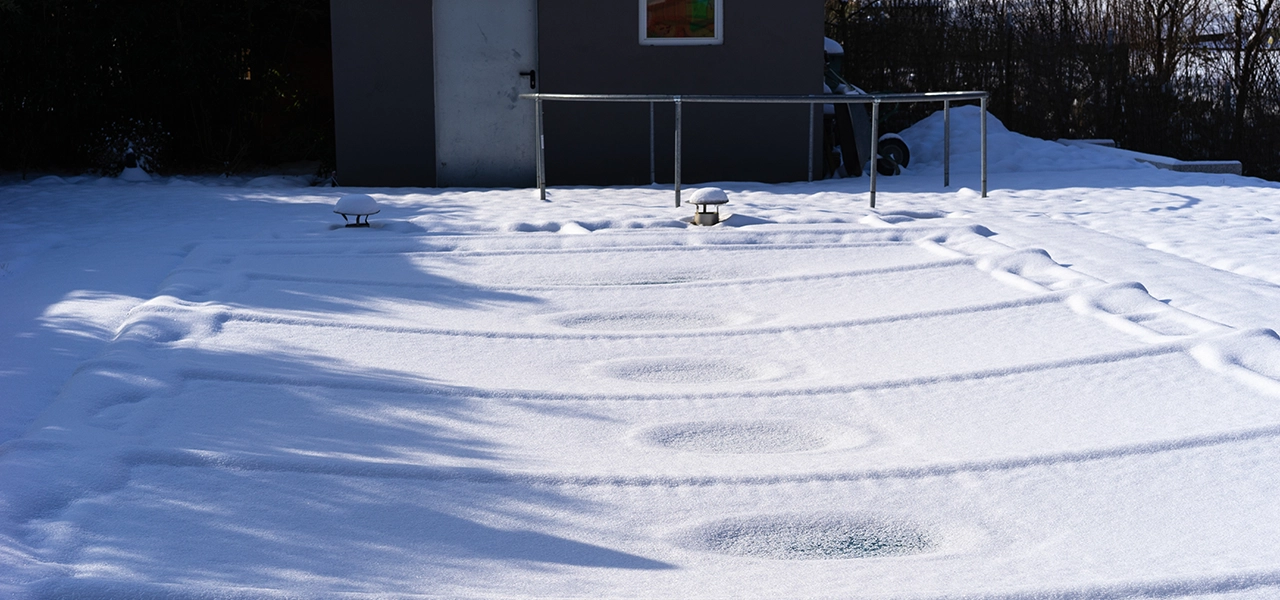
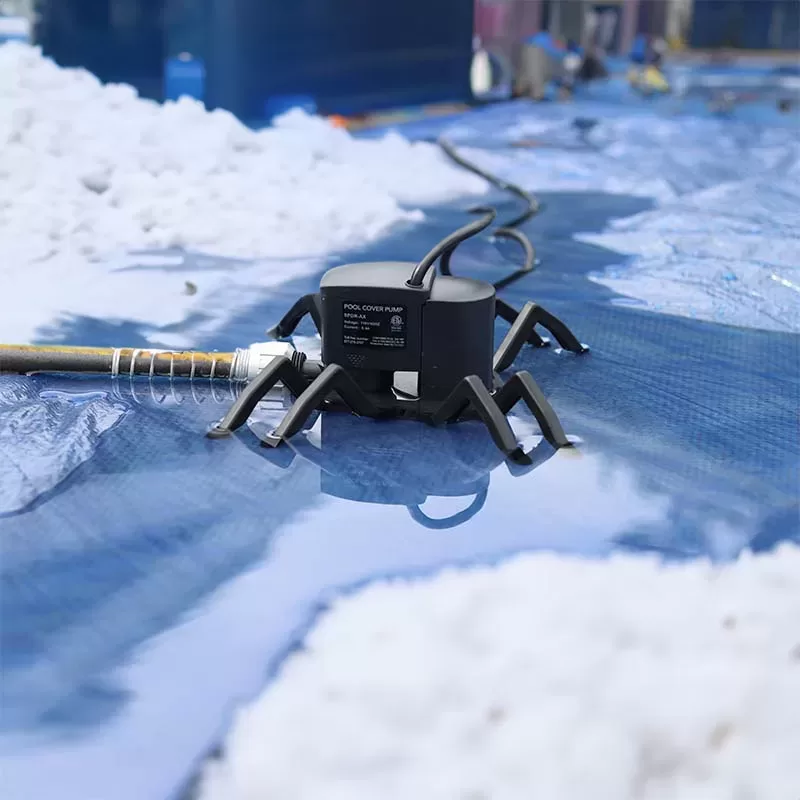
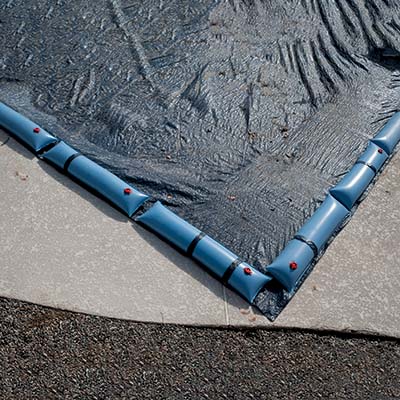
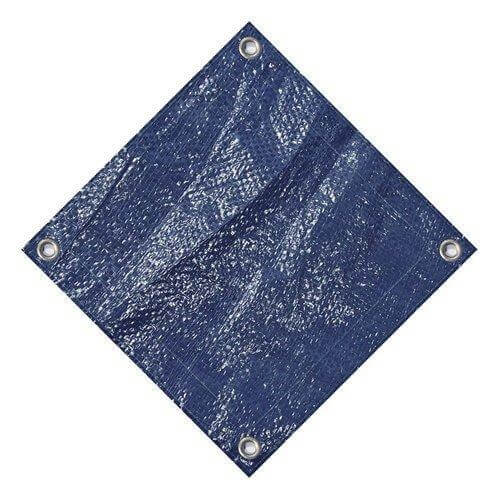
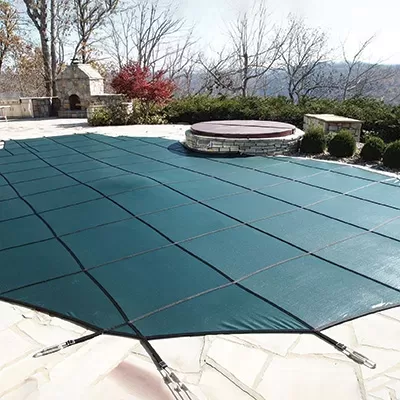


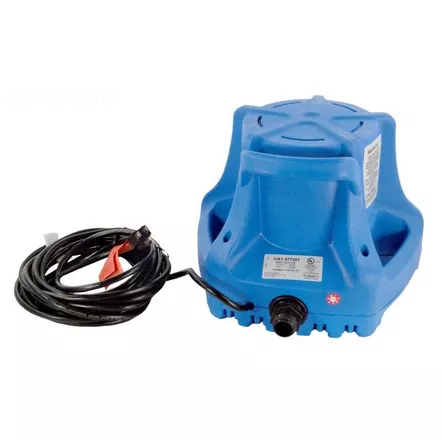

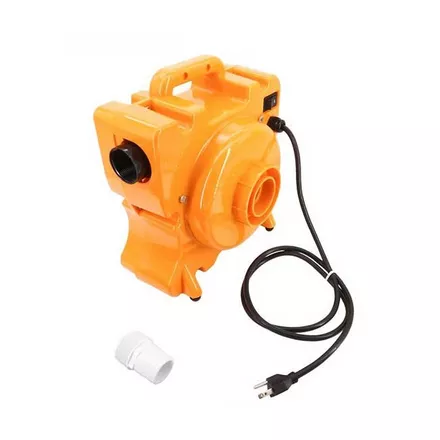
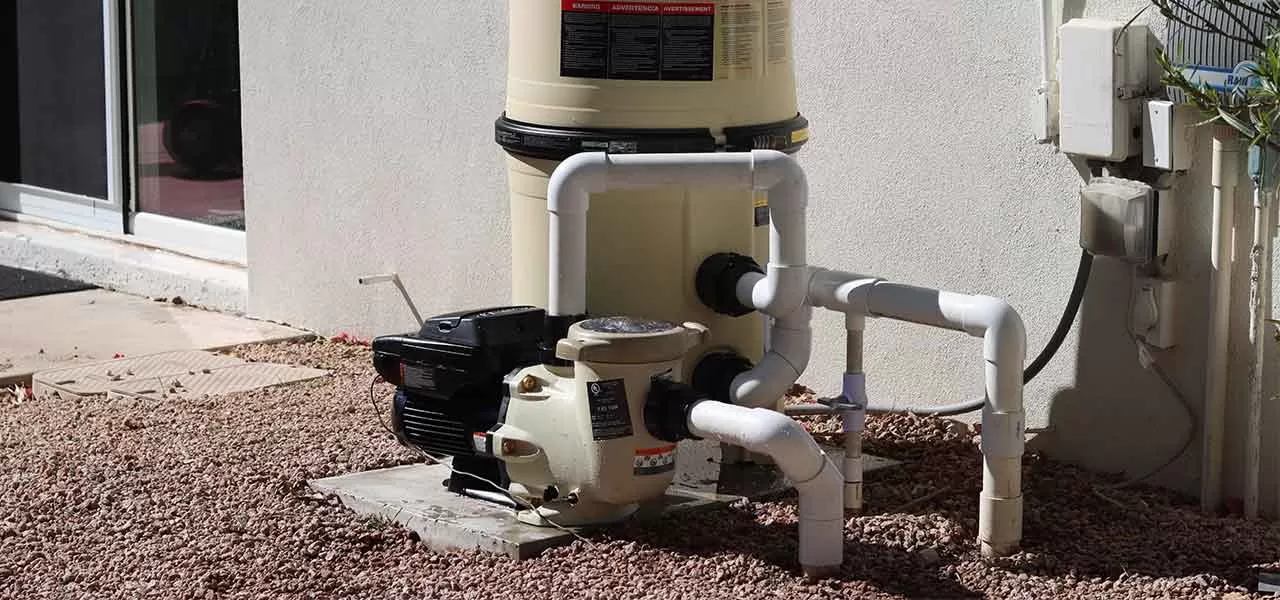
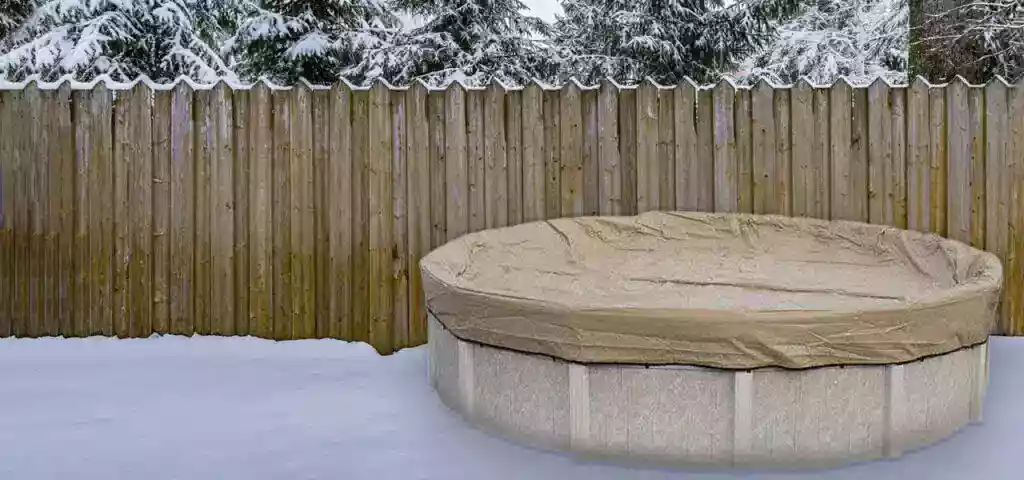
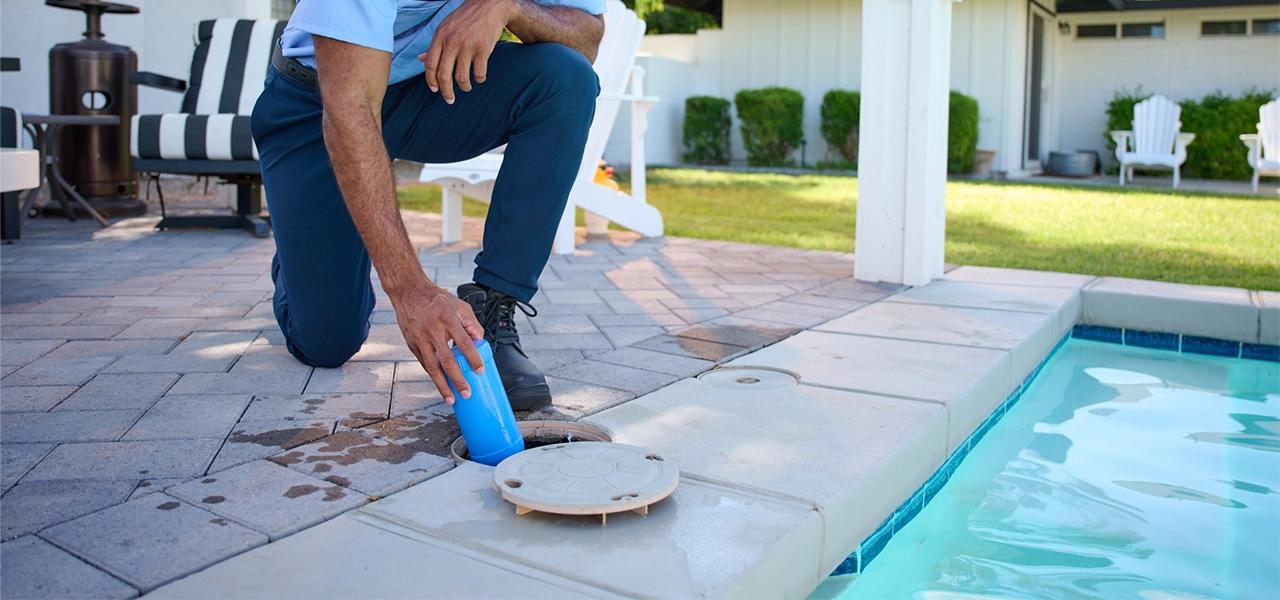
I have a 18ft above ground pool. We live in Muskoka and get lots of snow. Could I purchase an extra large winter cover and let it sit on top of the water instead of tight across the top with a pillow underneath.
Hi Mel, winter covers for aboveground pools are meant to float on the water, they are not stretched tight across. Air Pillows are not used to raise the cover off of the water level, so the rain runs off, which does not happen. They are meant to prevent the pool surface from freezing entirely across the pool, to prevent damage to the walls from ice expansion. You won’t need a larger cover, just the normal 18 ft cover is fine.
We live in VT. We have a 16×30 in ground gunnite pool with 6in tiles all around the top edge. The tiles lasted for 13 years before they started falling off. We started with a solid cover and a pump and then moved to a mesh cover. Does a solid cover protect the tiles better than the mesh?
Good question, but actually the cover may not be the problem, it mainly depends on where you have the water level when it freezes. It’s best to have the water level below the tile when it is frozen solid, and in VT it will be frozen solid for 6 months, at varying thicknesses. Your action time is late winter, early spring, to lower the water level in the pool, if you have a mesh cover, because the water level will rise, and refreeze, with rain/snow over winter, at the level of the tile. Pool tile is Frost-Proof, but if there are voids behind the tile, the pressure of the ice sheet, as it expands horizontally, can put pressure on tile, and crack them. However, tile can fall off for other reasons, such as a crack above the tile, that lets water get behind the tile, or a horizontal crack Behind the tile, in the top of the pool wall. This is called Beam Damage and is a result of the deck and pool hitting each other, and can be exasperated by not caulking the expansion joint.
Hi, are there any specific heater cables you recommend I use to wrap around the power cord of my pool cover pump? So many different types of pipe heater, gutter deicer, etc types of cables. It would need to be submersible, thermostat controlled and also not capable of getting so hot it melts my pool cover. Also , can I wrap the cable around the base of the pump to help it melt through the sheet of ice that’s on the pool or any future ice. Help! Very new to pool ownership
Hi Davy – We live in Michigan and get up to 10 feet of snow over the winter season. We have an 18 foot above ground pool that is 4 ft deep arond the edge and 6 feet deep in the middle. I’ve always used a solid cover, because I thought that mesh covers were for pools used in warmer climates. The solid covers have always been a nightmare for me. I’ve tried using a manual pump – it froze into the water that it was supposed to remove. By the time the ice and snow on the cover thawed enough for me to use the pump, the weight of the accumulated ice build up had displaced pool water, and lowered the level so far that there was severe stress and tearing on the cover.
I used 3-4 4×4 pillows, and / or elongated pillows, followed the directions and didn’t overfill them. But they would deflate over the season and become ineffective.
Is a mesh cover a better solution for me? If so, can you give me some pointers to make it the most effective and hassle-free?
Hi Dave, I am not a big fan of the mesh covers, in that they allow too much debris and sunlight thru, and they don’t sit tight across the pool, but float on the water. Have you considered an automatic cover pump? One of good reliable quality like the Little Giant Water Wizard, with the automatic float and stabilization plate (A5005), can keep your cover pumped off. In addition, you may want to remove large snow build-up manually, with a plastic snow shovel (carefully, so as not to puncture cover). As for the air pillows, it can be hard to seal the air valve, and that is the source of much leaking. Try covering the valve with duct tape, after inflating. Actually, there is one mesh cover that I do like, it’s the Ultimate 3000 covers, that have a single strip of drain mesh, and sit tight across the pool.
Can you use a non fully inflated pool pillow to keep an automatic in ground pool cover from imploding from excessive snow? I do not have a winter cover. Thank you in advance for the reply.
Hello, great question. The problem with using an automatic cover as a winter cover, is that the tracks are usually screwed into the underside of the coping, and heavy snow and ice on top of the cover can pull the tracks out. Also, winter water level is lower, so the cover is tighter, bringing more stress. It also stresses the fabric and the additional six months of UV sunlight also weakens the fabric. Fabric changes cost several thousand dollars, so in most cases, we recommend a safety cover be used during winter, or a regular floating solid winter cover, and keeping the auto cover safely rolled up during winter.
Now to your question, using Air Pillows under the auto cover, to keep it somewhat elevated, to reduce the stress that the rain and snow and ice will bring. I suppose if you used several of the large 4’x15′ pillows, tied together with string, so the movement of closing the cover won’t move the pillows to the shallow end, could be an option, but I’m not sure how effective it would be – I’ve never seen it done. I suppose it would help some, but may not be worth it. If you do use the cover this winter, I would keep the water as high as possible, but not so high that it comes up over the deep end wall cover shelf, or spills into the skimmers, and use an automatic cover pump to pump off the rain and snow melt quickly and automatically. The snow will just have to wait until it melts, but it will push on the water under the cover, raising the level and spilling into the skimmers and cover box, lowering the water level, so after much snow, you may want to add water to the pool. Another option would be to uncover the pool before snowstorms.
Can I use a pllow under my solid safety cover on my inground pool to help divert the water to the pump. I am getting two puddles. One on each side.
Hi Cary, you could but… the best way would be to adjust the straps, so that the straps running thru the center, in both directions are looser, and the straps in all four corners are tighter, to produce a natural dip or incline toward the drain panels.
I have an in ground 18×36 vinyl that leaks along the seam b/w the steel wall and where it meets the sand. 30-40 holes detected due to ants. what product is best to use to seal them. from other sites, it seems “Fix a leak” is good.thoughts
Hi Charles, if there are 30-40 small holes in the liner, I would use a sealant like Anderson’s Flexible Sealer or EZ Patch 28. Fix a Leak – i don’t think would be as good of a solution, or it may not work at all or only temporarily. Be sure to clean the area well first, before patching, to obtain the best seal.